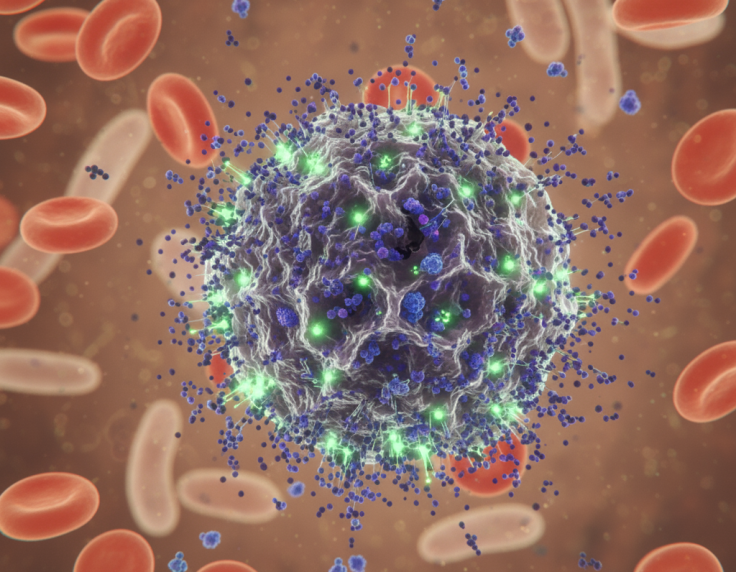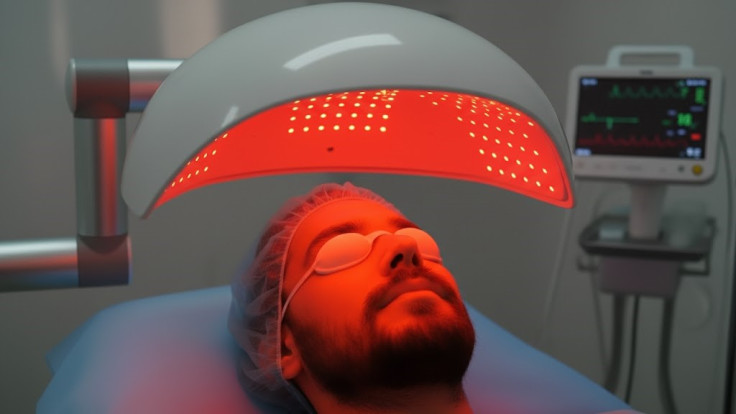Cancer Breakthrough: New Light Therapy Safely Eliminates Cancer Cells in Just 30 Minutes, Study Finds
Researchers unveil a safe, fast cancer treatment using LED light and tin nanomaterials to target tumours

A revolutionary LED light cancer therapy developed by scientists in the US and Portugal can destroy cancer cells in just 30 minutes while leaving healthy tissue untouched.
The discovery, achieved through a collaboration between the University of Texas at Austin and the University of Porto in Portugal, uses tin-based nanomaterials and simple LED lights to kill cancer cells — potentially transforming cancer treatment worldwide by selectively targeting cancer cells.
Researchers say the low-cost, non-toxic method could replace or complement chemotherapy and radiotherapy, offering a safer, faster, and more affordable alternative for millions of patients.
The technique combines near-infrared LED light with ultra-thin tin oxide (SnOx) nanoflakes. When activated by light, these nanomaterials generate reactive oxygen species that selectively kill cancer cells without harming surrounding healthy tissue.
How the New Therapy Works
The treatment uses near-infrared LED light to activate ultra-thin oxide (SnOx) nanoflakes. When illuminated, these nanomaterials generate reactive oxygen species (ROS) that destroy tumour cells while sparing healthy ones.
Unlike traditional photodynamic therapies that require costly laser systems, this new technique uses inexpensive LED light sources and tin-based materials that can be easily produced and scaled.
'Chemotherapy and radiotherapy remain vital tools, yet they can damage healthy cells and cause serious side effects,' noted Dr Justin Stebbing, commenting on the study.
In laboratory tests, the LED-activated nanoflakes induced complete cancer cell death within 30 minutes, while healthy cells remained intact —a level of selectivity rarely seen in conventional treatments. Importantly, healthy cells remained unaffected, suggesting high selectivity and safety.
Advantages Over Conventional Therapies

Current cancer treatments such as chemotherapy and radiotherapy are known for their harsh side effects, including fatigue, nausea, and long-term damage to healthy organs. This new light-based therapy could offer a gentler alternative, especially for patients with early-stage or localised tumours.
According to the University of Texas UT News, using LED light rather than high-powered lasers significantly reduces the risk of damaging healthy tissue and lowers treatment costs. The researchers also emphasised that the materials used are relatively inexpensive and scalable, making the therapy more accessible.
Challenges and Next Steps
While the results are promising, the therapy is still in its early stages. The researchers acknowledge that further testing in animal models and clinical trials is needed before it can be approved for widespread use.
Researchers from the UT Austin Portugal Programme described the LED-based therapy as a promising step toward safer, more accessible cancer treatment, though they acknowledged that further testing and development are needed.
The team is currently working to refine the delivery mechanism and ensure that the nanomaterials can be safely administered in vivo. They also plan to explore how the therapy performs across different types of cancer, including breast, lung, and prostate.
Global Implications
If successful, this therapy could have profound implications for global cancer care, particularly in low-resource settings where access to expensive treatments is limited. The simplicity and affordability of LED-based phototherapy could make it a viable option in hospitals and clinics worldwide.
Cancer remains one of the leading causes of death globally, with over 10 million deaths reported in 2020 alone. Innovations like this offer a glimmer of hope in the ongoing battle against the disease.
The development of a light-based therapy that can eliminate cancer cells in just 30 minutes marks a significant milestone in oncology research. While more testing is needed, the early results suggest a future where cancer treatment is not only more effective but also less traumatic for patients.
As researchers continue to refine the technique, the medical community and patients will be watching closely. For now, this breakthrough offers a beacon of hope in the fight against one of humanity's most persistent health challenges.
Conclusion
The LED light cancer therapy marks a milestone in medical innovation — a painless, precise treatment that kills cancer cells within minutes without harming the body. Though more testing is required, the discovery represents a powerful leap toward safer, smarter, and more humane cancer care.
In the war against one of humanity's deadliest diseases, science may have finally found a light strong enough to fight back.
© Copyright IBTimes 2025. All rights reserved.





















